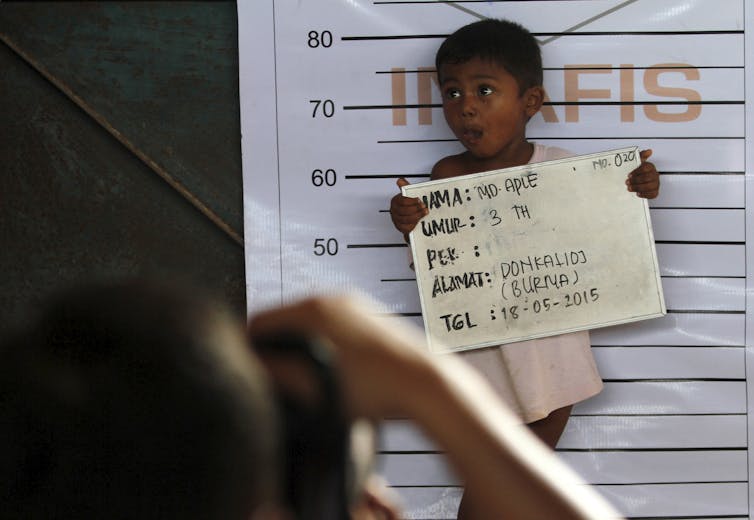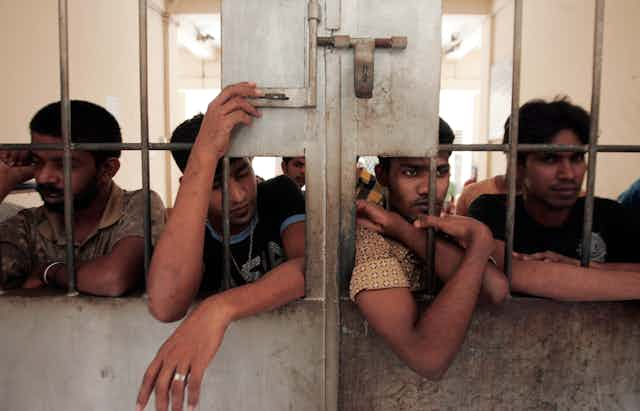A presidential decree on refugees released last December finally acknowledges asylum seekers and refugees for what they are – people in need of protection.
Prior to this, Indonesia categorised foreigners arriving in Indonesia seeking protection from wars or persecution in their home countries as “irregular” or even “illegal immigrants”, obstructing their search for effective protection.
While some observers consider the legal recognition a breakthrough, the decree still falls short in helping refugees endure their lives in limbo.
The decree states that local administrations may be asked to provide shelter for asylum seekers and refugees. In reality, this may be rather challenging.
Rescue orders
Before issuing the decree, the Indonesian government dealt with matters concerning asylum seekers and refuges on an ad hoc basis through the Director General of Immigration.
The 2016 Presidential Decree on Handling Foreign Refugees finally gives a legal basis for the rescue, evacuation, monitoring, registration and accommodation of asylum seekers and refugees.
It assigns responsibilities to ministries and state institutions, such as the foreign ministry, military and police, search and rescue bodies and local governments, with clear instructions on what relevant institutions should do.
The decree mandates the rescue of stranded refugees and asylum seekers found in Indonesian waters. This directive should ensure that tragic incidents like the 2015 Andaman Sea Crisis, when boats of Rohingya refugees were at first not allowed to land in Aceh and pushed back to sea, should never happen again.
In the sense that it anticipates the arrival of asylum seekers, the decree is forward-looking. However, it says little about the more than 5,000 refugees currently living autonomously in Indonesia.
Life in limbo
Compared with other receiving or transit states in Southeast Asia, the numbers arriving in Indonesia are small. In June 2017, UNHCR counted 14,337 asylum seekers and refugees in Indonesia. Globally, more than 65 million people have been forcibly displaced, and 22.5 million of them are refugees.
Around 4,100 refugees and asylum seekers live in 13 immigration detention facilities across Indonesia, and 4,448 live in community houses funded by the International Organisation for Migration (IOM). The remaining people, more than 5,700, live autonomously among local populations.
The waiting time for refugee status determination in Indonesia is at least two years. Indonesia is not a signatory to the UN Refugee Convention, thus does not resettle refugees or allow their local integration into the Indonesian society. Given the huge demand and the limited availability of offers for resettlement around the world, it is not uncommon for refugees to wait in Indonesia for five years or longer.
Asylum seekers and refugees in Indonesia are not allowed to work. If found working illegally, they would be placed in immigration detention. They have no means to earn a living other than receiving a monthly stipend that the IOM hands out to some.
Child refugees in Indonesia have limited access to education. Around 20% of asylum seekers and refugees in Indonesia are children. The decree does not explicitly deny access to formal education for asylum seekers and refugees, nor does it guarantee its provision.
Refugees have in recent years opened a number of self-organised schools. In several locations, the Church World Service and others have also piloted vocational training programs for refugees. But more needs to be done, because many of the refugees will stay for a very long time in Indonesia.
Shelter for refugees
To provide shelter for incoming refugees and asylum seekers, heads of immigration detention centres will have to co-ordinate with local district and municipal governments.
Relevant government officials acknowledge that immigration detention facilities should not be used for housing refugees and asylum seekers. Aside from being overcrowded, detention centres were not built for that purpose. Detaining refugees has also given Indonesia a bad reputation.
But finding alternatives to detention to accommodate asylum seekers is difficult.
Many cities that offered community shelters in the past face growing protest from the local population. They are often unwilling to increase their capacity to host more refugees indefinitely.
The decree is silent on whether local governments have a right to refuse to accommodate refugees. Under Indonesia’s regional autonomy policies, regional governments have broad powers to manage their own affairs and resources.
The decree authorises government agencies, both national and subnational, to fund the implementation of provisions relevant to their responsibilities for refugees from their own budgets.
For regional governments, funding will most likely appear under the budget allocation for “unforeseen expenses”, lumped together with funding for emergency situations, such as natural disasters.
It will be interesting to see how regional governments will allocate the politically unpopular budget for refugees.
Because the decree was signed on the very last day of 2016, none of the relevant government agencies have had the opportunity to apply for a budget for its implementation in 2017.
The earliest we will be able to see proper change in the handling of asylum seekers will be in 2018, or even later, when local governments have allocated funding or applied for and received additional national funding to accommodate asylum seekers in their districts.
The decree mentions no sanctions against local governments if they do not fund their responsibilities for managing asylum seekers.

Indonesia’s decree on refugees attempts to strike a delicate balance between humanitarian imperatives and national interests. It has closed a number of gaps in the protection of asylum seekers and refugees in Indonesia. But it is still modest in its ambition.
Its implementation still faces hurdles. If these cannot be overcome, serious reconsideration of what the decree can achieve will be called for.


